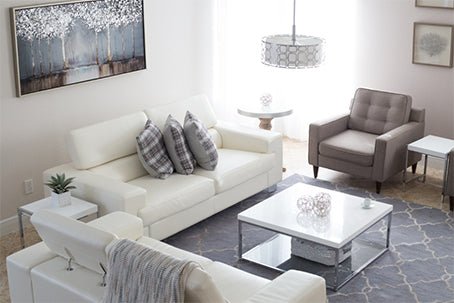Fine area rugs are more than just floor coverings; they are works of art that add elegance, warmth, and character to any room. At RenCollection Rugs in Dallas, TX, we offer an exquisite selection of handmade, handwoven, and handknotted fine area rugs. In this blog, we’ll explore the unique qualities of fine area rugs, how to choose the right one for your home, and tips for maintaining their beauty.
1. The Unique Qualities of Fine Area Rugs
Fine area rugs stand out for several reasons:
-
Craftsmanship: Each rug is meticulously crafted by skilled artisans, ensuring exceptional quality and durability.
-
Materials: High-quality materials such as wool, silk, and cotton are used, providing a luxurious feel and lasting beauty.
-
Design: These rugs feature intricate patterns, vibrant colors, and unique designs that can serve as the focal point of any room.
2. Choosing the Right Fine Area Rug for Your Home
When selecting a fine area rug, consider the following factors:
-
Size: Measure your space to determine the appropriate rug size. Ensure the rug fits well within the room’s dimensions and complements your furniture layout.
-
Style: Choose a rug that aligns with your personal style and the room’s decor. Whether you prefer traditional, contemporary, or transitional designs, RenCollection Rugs has a variety to suit your taste.
-
Color: Select colors that harmonize with or contrast your existing decor to create a cohesive look.
-
Pattern: Consider the room’s usage and furniture placement when choosing a pattern. Busy patterns can hide stains and wear, while simpler designs can make a space feel more open.
3. Placement Tips for Fine Area Rugs
Proper placement enhances the impact of fine area rugs:
-
Living Room: Center the rug under your main seating arrangement. Ensure that the front legs of your furniture sit on the rug to anchor the space.
-
Dining Room: Place the rug under the dining table, allowing enough room for chairs to be pulled out without falling off the rug.
-
Bedroom: Position the rug under the bed, extending it out on all sides to create a cozy, unified look.
4. Maintaining the Beauty of Fine Area Rugs
To keep your fine area rugs looking their best, follow these care tips:
-
Regular Cleaning: Vacuum regularly to remove dirt and debris. Avoid using a beater bar, which can damage delicate fibers.
-
Professional Cleaning: Schedule periodic professional cleanings to deep-clean and preserve the rug’s beauty and integrity.
-
Rotate: Rotate your rug every few months to ensure even wear and prevent fading from sunlight exposure.
-
Protect: Use rug pads to prevent slipping and to provide additional cushioning, extending the rug’s lifespan.
5. Why Choose RenCollection Rugs for Fine Area Rugs
RenCollection Rugs offers an unparalleled selection of fine area rugs, distinguished by their quality and beauty:
-
Handmade Excellence: Our rugs are handmade, handwoven, and handknotted, ensuring superior craftsmanship.
-
Wide Variety: We offer a diverse range of styles, sizes, and designs to meet your specific needs.
-
Expert Assistance: Our knowledgeable team can help you choose the perfect rug for your space and provide care and maintenance advice.
-
Customer Satisfaction: We are dedicated to providing exceptional customer service and ensuring you find the ideal rug for your home.

Frequently Asked Questions (FAQ)
Q: What makes a rug "fine"? A: Fine rugs are distinguished by their high-quality materials, intricate designs, and superior craftsmanship. They are often handmade using traditional techniques.
Q: How often should I professionally clean my fine area rug? A: It’s recommended to have your fine area rug professionally cleaned every 12-18 months, depending on usage and exposure to dirt and spills.
Q: Can fine area rugs be used in high-traffic areas? A: While fine area rugs are durable, it’s best to place them in low to moderate-traffic areas to preserve their beauty. Use rugs made from sturdy materials like wool for higher-traffic spaces.
